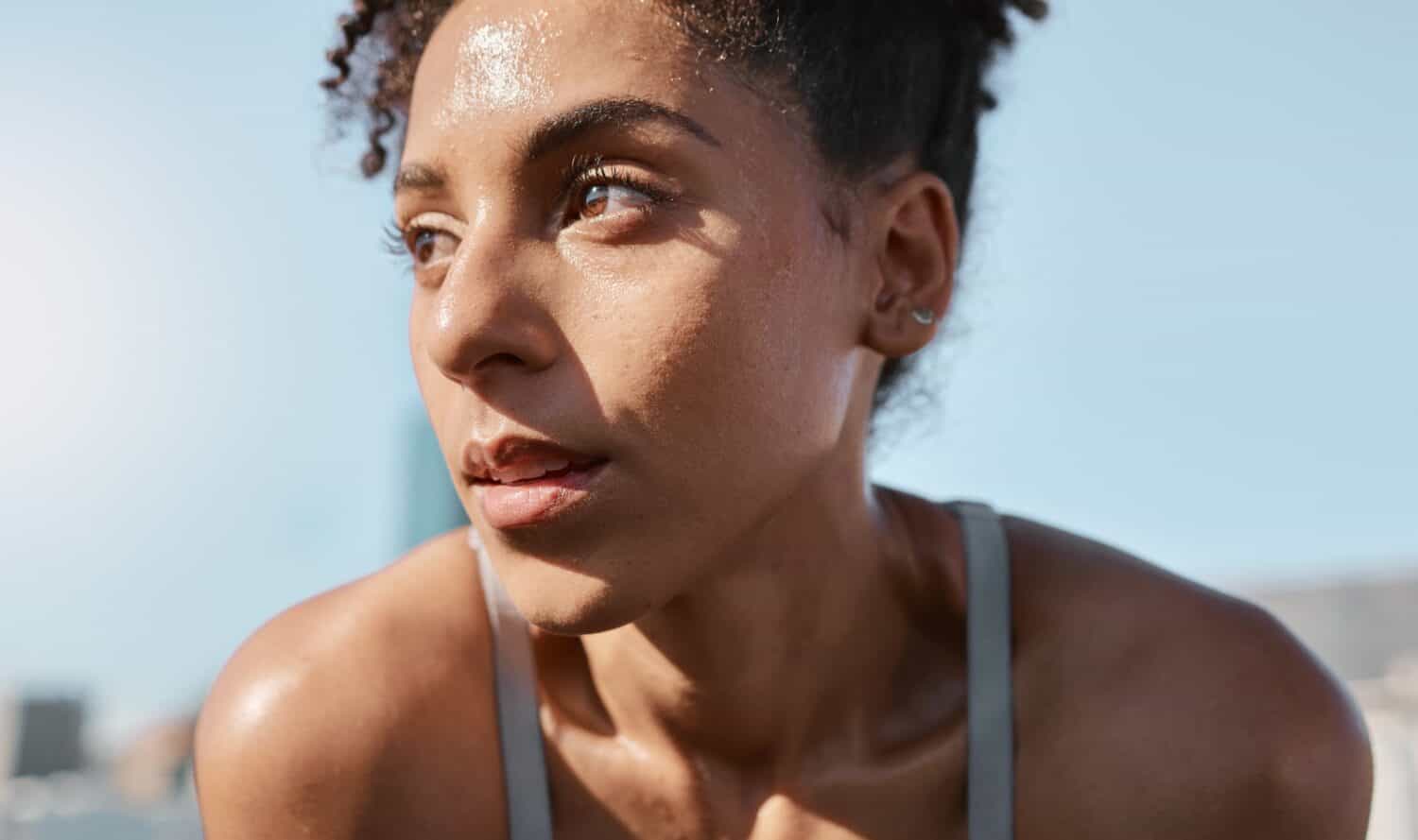North Carolina has many historic attractions that draw tourists during the summer. The Wright Brothers National Memorial, for example, celebrates the place where the Wright brothers experimented, and succeeded, with flying! Other natural landmarks, like the Blue Ridge Mountains, draw visitors because of the landmark’s unusual beauty. But, before touring these great sites, visitors should prepare for the high summer temperatures. Find out what you can expect from North Carolina’s climate. And discover the record-breaking temperatures like the hottest temperature ever recorded in North Carolina.
North Carolina’s Average Temperatures

Most of the state has humid subtropical climates typified by hot, humid summers and cool, mild winters.
©CeGe/Shutterstock.com
The climate can vary depending on where in North Carolina you are visiting. Most of the state has humid subtropical climates typified by hot, humid summers and cool, mild winters. However, cities in the Appalachian Mountains’ higher elevations experience subtropical highland climates. Because of the elevation, the air temperature drops, giving these areas mild weather all year round.
For instance, Asheville, which is situated by the Blue Ridge Mountains, has winters that range from 36°F to 47°F on average. However, from May until October, temperatures are between 55°F to 73°F, with June, July, and August being in the low 70’s.
Contrast that with Charlotte, which is in the middle of the state. From November through March, temperatures fluctuate between 41°F and 55°F. The spring and fall experience mild temperatures between 52°F and 70°F. The summers heat up with average temperatures ranging from 76°F to 80°F.
And then, the climate is slightly different for Wilmington, since it is right by the coast. It experiences primarily wet and cloudy weather all year round. The hottest months are between May and September, with an average high temperature above 82°F. July, of course, is the muggiest month with an average high of 88°F. On the other hand, from December to March, temperatures range from 46°F to 55°F, with January being the coldest month.
The Hottest Temperature Ever Recorded in North Carolina
The highest temperature North Carolina experienced was on August 21, 1983. On that day, it reached 110°F in Fayetteville.
Fayetteville is between Charlotte and Wilmington, putting it in the zone for a subtropical climate. Fayetteville has very muggy summers because of the air’s moisture and the ocean’s proximity. The high humidity often makes it feel hotter than the actual temperature outside. The average summer highs range from 88°F to 90°F, with July being the hottest month. However, August is often the second hottest month, so it is no surprise that the record-breaking temperature occurred in August.
How Our Bodies React to High Temperatures

In very hot temperatures, like the hottest temperature ever recorded in North Carolina, your body may be unable to keep up, resulting in heat-related illnesses.
©PeopleImages.com – Yuri A/Shutterstock.com
Our bodies maintain internal temperatures around 97°F to 99°F. Any hotter and our bodies will deploy mechanisms designed to bring our temperatures down. The first mechanism is through sweat. As sweat evaporates off your body, your body experiences a cooling. And if that doesn’t do the job, your body will try dilating your blood vessels and increasing your heart rate. This brings all the extra heat to the surface of your body, where it can be dispelled more easily.
But in very hot temperatures, like the hottest temperature ever recorded in North Carolina, your body may be unable to keep up. This results in heat-related illnesses. For mild reactions, you may experience heat cramps, or a heat rash may break out on your skin. But, more severe impacts happen if your internal temperature is 104°F to 105°F. This is when you will experience heat stroke. Your skin will look red and you will have a fast pulse. You may feel confused or dizzy. Other symptoms are headaches, nausea, and fainting. If you are suffering from heat stroke, seek medical attention right away. If left untreated, heat stroke can lead to death.
Animals That Thrive in Hot Temperatures
Many animals in the area have adapted to the subtropical climate in North Carolina. But, if temperatures get too extreme like the hottest temperature ever recorded in North Carolina, they have also found clever ways to stay cool.
Cottonmouth

As semi-aquatic snakes, cottonmouths are the only species of venomous snakes that spend most of their day in the water.
©Rafael R Sandoval/Shutterstock.com
As an ectothermic reptile, the cottonmouth snake (also known as a water moccasin) uses outside heat sources to regulate its temperature. As far as high temperatures go, a cottonmouth enjoys temperatures in the low 90s for basking.
Around 2-4 feet long and weighing an average of 3-4 pounds, this snake has a reasonably wide body compared to other pit vipers. Its thick body helps it stay afloat as it swims on the water’s surface. As semi-aquatic snakes, cottonmouths are the only species of venomous snakes that spend most of their day in the water.
The cottonmouth has several strategies for surviving the humid summers of North Carolina. The first is switching to being nocturnal during the summer months. As a pit viper, the cottonmouth uses the heat-sensing “pits” on each side of its head to hunt prey. These pits allow them to distinguish between different heat sources, giving them accurate striking ability in the dark. The cool temperatures at night are much more tolerable than the daytime highs.
Another way the cottonmouth cools down is through the water. Like humans enjoy swimming in the lake on a hot day, cottonmouths also favor swimming. Although usually skimming the water’s surface, cottonmouths can also go underwater for 15 minutes or more. On hot days, like the hottest temperature ever recorded in North Carolina, cottonmouths will spend much of the day in a river or lake.
Fire Ants

At most, fire ants can take highs up to 125°F. So, even in the hottest temperature ever recorded in North Carolina, fire ants can survive it.
©EngineerPhotos/Shutterstock.com
One study conducted by the Texas A&M University, Department of Entomology found that fire ants can withstand temperatures you wouldn’t even believe. At most, fire ants can take highs up to 125°F. So, even in the hottest temperature ever recorded in North Carolina, fire ants can survive it.
They have also adapted how they construct their mounds to optimize temperature and moisture regulation. Unlike other ant mounds, a fire ant mound has no entry hole in the center. But, they utilize a series of tunnels that exit the colony to the surface. And if it gets too extreme, the ants retreat to deeper and deeper tunnels.
Eastern Mud Turtle

Often eastern mud turtles will feed at dawn or dusk, retreating to the water during the hot midday temperatures.
©Liz Weber/Shutterstock.com
You may spot the eastern mud turtle around freshwater habitats with slow-moving water. Like the cottonmouth, these mud turtles beat the heat by being active at night. Often they will feed at dawn or dusk, retreating to the water during the hot midday temperatures.
If temperatures get too hot or the climate becomes too dry, the eastern mud turtle will bury itself in the mud and wait out the unpleasant weather. Their respiratory system has adapted to breathe both on land and in the water. But, it can only stay 20 minutes underwater before needing to resurface.
In Conclusion
While the hottest temperature ever recorded in North Carolina was an extreme 110°F, usually the highs occur in the summer months between June and August. Winters in the state are pretty mild, and the spring and fall are gorgeous. All in all, when you are visiting the fantastic monuments and natural wonders of North Carolina, be aware of the predicted highs in the summer. And stay hydrated!
Thank you for reading! Have some feedback for us? Contact the AZ Animals editorial team.








